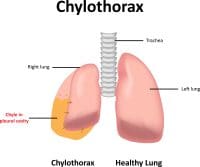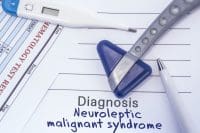Nursing assessment, symptom management, and patient education
Takeaways:
- Myeloproliferative neoplasms are rare progressive hematological cancers.
- Although symptom burden is high, medical care is focused on preventing thrombotic and cardiovascular events.
- Nurses play an important role in monitoring for symptom burden and providing patient education to mitigate symptoms and improve quality of life.
Editor’s note: This is a web exclusive article for the November 2021 issue of American Nurse Journal.
Myeloproliferative neoplasms (MPNs) comprise a group of rare, chronic, slow-growing hematologic cancers that develop in the bone marrow and frequently are associated with mutations in the JAK2, CALR, and MPL genes. The three MPN subtypes are essential thrombocythemia (ET), polycythemia vera (PV), and primary myelofibrosis (PMF).
MPNs are identified by how they proliferate and by erythrocytosis, thrombocytosis, leukocytosis, or splenomegaly involvement. ET causes increased platelet counts, indicating thrombocytosis. PV causes erythrocytosis and, in some patients, elevated white blood cells and increased platelets. PMF results in bone marrow scarring from overproduction of mutated stem cells. As scar tissue increases, the bone marrow can’t produce blood cells, leading to anemia and splenomegaly. All MPNs are progressive but may remain stable with no changes or they may evolve from ET to PV, from ET to PMF, or from PV to PMF.
Patients with hematologic cancers frequently are managed in outpatient settings. However, patients may be admitted to the hospital as a result of disease complications, including venous thromboembolism (VTE). Patients should understand how to manage MPNs, assess symptom burden, discuss treatment options, and prepare patients for discharge.
Managing MPNs
Medical management for patients with MPNs includes accurate diagnosis with extensive laboratory evaluation and bone marrow aspiration. Providers, including hematologists, use the World Health Organization classification system to obtain a diagnosis and define morphologic, genetic, and bone marrow features. The National Cancer Comprehensive Network (NCCN) MPN clinical practice guidelines provide recommendations for diagnostic workup, treatment, and supportive care. These guidelines include an evidence-based risk stratification plan to assess clotting and bleeding risk and an evidence-based algorithm to guide treatment and pharmacologic therapy to prevent clotting and bleeding.
Risk factors for clotting and bleeding include age greater than 60, a history of thrombosis, cardiovascular risk factors, and mutation in the JAK2 gene. The most significant risks for patients who have MPNs are thrombosis (including VTE) and hemorrhage, so medical management prioritizes preventing clots and bleeding.
Thromboembolic events
Because more than one-third of patients with MPNs experience VTE before diagnosis, patients admitted to the hospital with elevated platelets, white blood cells, or hematocrit, or who present with a deep vein thrombosis (DVT), pulmonary embolism (PE), myocardial infarction (MI), or stroke should be evaluated for MPNs. Prompt diagnosis and treatment may prevent MPN complications. Recently, some thromboembolic events have been associated with COVID-19, so patients who present with DVT, PE, MI, and stroke also should be evaluated for the virus. (See Newly diagnosed patients.)
Newly diagnosed patients
Patients diagnosed with myeloproliferative neoplasm (MPN) may be informed when they’re hospitalized for a condition caused by the disease, such as venous thromboembolism. No matter when they are diagnosed, patients may be overwhelmed, so they need support and information.
Base your education on the patient’s previous knowledge and readiness to learn. The National Comprehensive Cancer Network (NCCN) produces a patient education booklet, which you can review and print for patient reference at home. The booklet describes types of MPNs, diagnostic tests, and treatments. It also includes patient self-care management techniques, such as eating a heart-healthy diet, scheduling rest, and pacing activities to avoid fatigue.
If your patient was originally hospitalized with another condition, explain one diagnosis at a time and avoid overloading the patient with simultaneous discharge instructions related to both conditions.
In all situations, be prepared to allocate significant time to providing education. Partner with a hematologist for initial and ongoing patient education, and refer to the NCCN clinical practice guidelines for MPNs.
Patients with or without MPNs receive the same acute medical treatment when experiencing a VTE, and nursing includes normalizing blood counts, administering anticoagulant medications, and providing physical and psychological support and patient education. However, patients with an MPN and a VTE may require long-term care and additional education because of different risk factors, including a higher rate of VTE recurrence, which increases significantly in patients over 60 or with a history of VTE. Patient education and nursing care for adults over 60 or with a history of VTE should focus on administrating long-term vitamin K antagonists (VKA). The risks and benefits of long-term VKA must be carefully weighed to prevent a recurrent VTE and bleeding. There is insufficient strong evidence to support a specific length of time for long-term VKA because patients with MPNs have an increased risk for clotting and bleeding.
Symptom burden
Regardless of MPN severity and risk stratification level, the symptom burden can be high. When a patient’s laboratory data, clinical presentation, and symptoms don’t align, you can use a patient-reported outcome tool such the MPN Symptom Assessment Form Total Symptom Score (MPN-SAF TSS) to gauge symptom burden. This valid and accurate tool will help you understand how a patient is experiencing the disease and enable you and the patient to establish mutual care goals and improve education. (See Symptom assessment.)
Symptom assessment
Use the Myeloproliferative Symptom Assessment Form Total Symptom Score to gauge a patient’s symptom burden. Ask questions about the following:
- fatigue
- filling up quickly when eating (early satiety)
- abdominal discomfort
- itching
- inactivity
- problems with concentration
- night sweats
- bone pain
- fever
- unintentional weight loss.
Sources: National Comprehensive Cancer Network 2019, Mesa, Miller, Thyne 2017
At each encounter, ask patients to identify which symptom on the assessment form they experience most throughout the day. For example, if a patient is experiencing fatigue, discern its severity, assess its effect on the patient’s quality of life and activities of daily living, and strategize with the patient to achieve symptom relief. Consider asking these questions to help you understand a patient’s fatigue level and guide treatment:
- Are you experiencing fatigue?
- Can you describe the fatigue?
- Is the fatigue new or worse?
- What makes your fatigue better?
- What makes your fatigue worse?
Although fatigue is the most commonly reported MPN symptom, patients also may experience itching, night sweats, and abdominal discomfort. Collaborate with patients to identify how their individual symptom burden affects them on a daily basis. Although your priority is to prevent thromboembolic events, you can work with the patients to assess symptoms and unmet needs, and then align nursing and patient goals for improved health and quality of life.
Post-hospitalization care
After VTE stabilization, a patient may be discharged home with a new diagnosis of chronic hematologic cancer and instructions to follow up with a hematologist for routine labs and disease management and with a primary care provider for wellness checks and quality-of-life management. The patient also will need information about medication administration and when to contact their provider. Emphasize to the patient that stabilization depends on preventing new thromboembolic events and cardiac disease, but also encourage them to monitor and balance their symptom burden with activities of daily living.
Patients must work to decrease cardiovascular risk factors, so address this aspect of their post-hospitalization treatment plan. A cardiac-healthy lifestyle can reduce thrombotic risks, but more research is needed on the exercise and dietary recommendations for patients with MPNs to improve quality of life and reduce fatigue and symptom burden. People with MPNs who participate in aerobic activity and strength training have demonstrated decreased symptom burden and fatigue as evidenced by lower scores on the MPN-SAF TSS. However, those with a lower or higher body mass index have reported an increase in fatigue and symptom burden. Integrative medicine strategies—such as massage, yoga, and support groups—haven’t demonstrated clear changes in symptom burden.
Medication recommendations
Medications for ET and PV are aimed at preventing VTE. The most commonly used are aspirin, hydroxyurea, pegylated interferon, and ruxolitinib. (See ET and PV medication safety.)
ET and PV medication safety
The goal of medication treatment in patients with essential thrombocythemia (ET) and polycythemia vera (PV) is to prevent venous thromboembolism.
| Medication | Patient safety |
| Aspirin 81–100 mg oral once to twice daily | · Know that higher doses may be appropriate for vasomotor symptoms (headache, lightheadedness, vision disturbances). · Use caution to avoid bleeding risks. |
| Hydroxyurea oral once daily | · Check for leg and mouth ulcers, GI disturbances, diarrhea, dry skin. |
| Pegylated interferon subcutaneous once a week | · Teach subcutaneous injection technique. · Check for flu symptoms (fever, myalgias, and fatigue). |
| Ruxolitinib oral twice daily | · Monitor for increased risk of opportunistic infections. · Monitor blood chemistries for low platelets, white blood cells, and red blood cells. · Monitor for lipid elevations. |
Source: National Comprehensive Cancer Network
Allogenic stem cell transplant is recommended as the only cure for PMF, but it’s associated with high mortality rates. PMF medications are palliative and don’t influence bone marrow fibrosis or survival. Overall, PMF prognosis is poor, so patients should be referred to a treatment center with providers experienced in treating PMF, and they should consider possible enrollment in a clinical trial.
Future outlook
Given the variability in disease progression and complications as well as symptom experiences in patients with MPNs, clinical care should be individually tailored to the patient’s characteristics and needs. Approaches to care—such as precision health methodologies that account for the interactions between genes, behaviors, and environment—can help identify patients at greater risk for MPNs and complications. For example, a study by Grinfeld and colleagues developed comprehensive genomic classifications for patients with MPNs, then integrated genetic and clinical variables to create and validate models to predict clinical outcomes (blood counts, leukemic transformation risks, and survival). Generating this type of evidence and translating it into algorithms for clinical practice has the potential to help healthcare teams identify unique risks and appropriate treatments to improve patient outcomes.
Assess and empower
Patients with MPNs can live healthy lives with minimal hospitalizations. When they’re hospitalized, nurses can partner with the patient’s hematologist and follow guidelines for thrombus care while monitoring the symptom burden, which is high for patients with MPNs. Nurses also can empower patients by providing information on precision medicine, potentially influencing their disease trajectory toward a more positive outcome.
Jill Brennan-Cook and Mitchell Knisely are assistant professors of nursing at Duke University School of Nursing in Durham, North Carolina.
References
Arachchillage DR, Laffan M. Pathogenesis and management of thrombotic disease in myeloproliferative neoplasms. Semin Thromb Hemost. 2019;45(6):604-11. doi: 10.1055/s-0039-1693477
Arber DA, Orazi A, Hasserjian R, et al. The 2016 revision to the World Health Organization classification of myeloid neoplasms and acute leukemia. Blood. 2016;127(20):2391-2405. doi: 10.1182/blood-2016-03-643544
Barbui T, De Stefano V. Management of venous thromboembolism in myeloproliferative neoplasms. Curr Opin Hematol. 2017;24(2):108-14. doi: 10.1097/MOH.0000000000000312
Barbui T, Thiele J, Gisslinger H, et al. The 2016 WHO classification and diagnostic criteria for myeloproliferative neoplasms: Document summary and in-depth discussion. Blood Cancer J. 2018;8(2):15. doi:10.1038/s41408-018-0054-y
De Stefano V, Finazzi G, Barbui T. Antithrombotic therapy for venous thromboembolism in myeloproliferative neoplasms. Blood Cancer J. 2018;8(7):65. doi: 10.1038/s41408-018-0101-8
Enblom A, Lindskog E, Hasselbalch H, et al. High rate of abnormal blood values and vascular complications before diagnosis of myeloproliferative neoplasms. Eur J Intern Med. 2015;26(5):344-7. doi: 10.1016/j.ejim.2015.03.009
Garmezy B, Schaefer JK, Mercer J, Talpaz M. A provider’s guide to primary myelofibrosis: Pathophysiology, diagnosis, and management. Blood Rev. 2021;45:100691. doi: 10.1016/j.blre.2020.100691
Gowin K, Langlais BT, Kosiorek HE, et al. The SIMM study: Survey of integrative medicine in myeloproliferative neoplasms. Cancer Med. 2020;9(24):9445-53. doi: 10.1002/cam4.3566
Grinfeld J, Nangalia J, Baxter EJ, et al. Classification and personalized prognosis in myeloproliferative neoplasms. N Engl J Med. 2018;379(15):1416-30. doi: 10.1056/NEJMoa1716614
Mesa RA, Jamieson C, Bhatia R, et al. NCCN Guidelines Insights: Myeloproliferative neoplasms, Version 2.2018. J Natl Compr Canc Netw. 2017;15(10):1193-1207. doi: 10.6004/jnccn.2017.0157
Mesa RA, Miller CB, Thyne M, et al. Differences in treatment goals and perception of symptom burden between patients with myeloproliferative neoplasms (MPNs) and hematologists/oncologists in the United States: Findings from the MPN Landmark survey. Cancer. 2017;123(3):449-58. doi: 10.1002/cncr.30325
Mesa R, Miller CB, Thyne M, et al. Myeloproliferative neoplasms (MPNs) have a significant impact on patients’ overall health and productivity: The MPN Landmark survey. BMC Cancer. 2016;16:167. doi: 10.1186/s12885-016-2208-2
National Comprehensive Cancer Network I. NCCN Clinical Practice Guidelines in Oncology (NCCN) Myeloproliferative Neoplasms. Presentation at: National Comprehensive Cancer Network (NCCN) / NCCN Foundation; 2019; Plymouth Meeting, PA. nccn.org/professionals/physician_gls/pdf/mpn.pdf
National Comprehensive Cancer Network I. NCCN Guidelines for Patients: Myeloproliferative Neoplasms. 2019. nccn.org/patients/guidelines/content/PDF/mpn-patient.pdf
Piazza G, Campia U, Hurwitz S, et al. Registry of arterial and venous thromboembolic complications in patients with COVID-19. J Am Coll Cardiol. 2020;76(18):2060-72. doi: 10.1016/j.jacc.2020.08.070
Scherber RM, Kosiorek HE, Senyak Z, et al. Comprehensively understanding fatigue in patients with myeloproliferative neoplasms. Cancer. 2016;122(3):477-85. doi: 10.1002/cncr.29753
Surapaneni P, Scherber RM. Integrative approaches to managing myeloproliferative neoplasms: The role of nutrition, exercise, and psychological interventions. Curr Hematol Malig Rep. 2019;14(3):164-70. doi: 10.1007/s11899-019-00516-w
Tefferi A. Primary myelofibrosis: 2019 update on diagnosis, risk-stratification and management. Am J Hematol. 2018;93(12):1551-60. doi: 10.1002/ajh.25230
Tefferi A, Barbui T. Polycythemia vera and essential thrombocythemia: 2019 update on diagnosis, risk-stratification and management. Am J Hematol. 2019;94(1):133-43. doi: 10.1002/ajh.25303


















